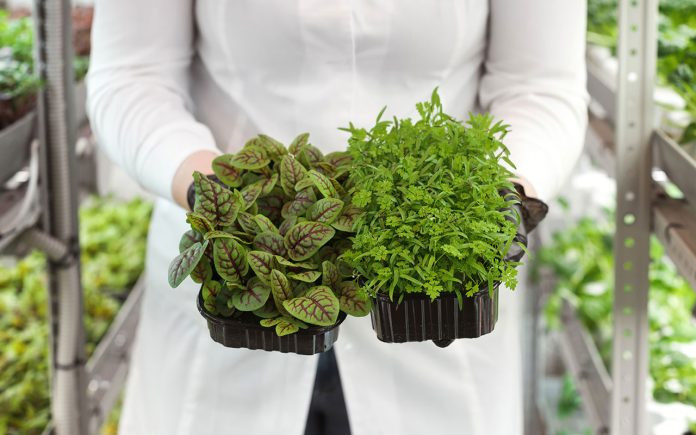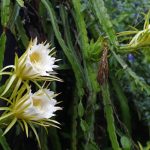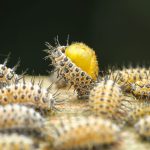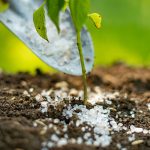Caring for plants requires more attention than just watering them once in a while. In this sense, one of the most important care that we have to take into account whenever we want to have healthy and beautiful plants is to protect them against pests. To do this, it is necessary to fumigate specific products that act as protectors against the specific pests that we want to eliminate and, when choosing these products, it is important that we take into account that natural products are going to be more respectful of plants, so they should be the first option to opt for. If you want to know how to fumigate plants with natural products, keep reading EcologíaVerde and we will tell you.
Why Use Natural Products to Fumigate Plants
Nowadays we can find a multitude of synthetic products aimed at eliminating plant pests. These products are very effective. However, they are also dangerous, often both for the plant, for the people and animals that live at home and for the environment in general. It should be noted that most synthetic products are so effective because they contain toxic products. Their function is to eliminate a pest and, for this, it is necessary that they act as a poison for said pest.
However, this also causes them to have side effects that, although they may not be seen a priori, are there and significantly affect the ecosystem. On the one hand, it must be taken into account that these are synthetic and toxic products that, although they are formulated for plants, this does not mean that they are harmless to them and their environment. In general, used correctly, that is, following the manufacturer’s instructions, it should not pose a risk to the plant. However, high use could lead to damage or even death of the plant. Therefore, they pose more risks than natural products that, although they are not always harmless, do not have the same level of risk, that is, natural products to fumigate plants are safer.
Secondly, they are toxic products and, therefore, they are identified with icons or symbols that warn that they should “be kept out of the reach of children”. Naturally, an adult is not going to consume this type of product by accident. However, in homes where there are children and pets, it is a real risk that will have to be considered. On the contrary, the use of natural products eliminates this unnecessary risk.
Finally, it must also be considered that the use of synthetic pesticide products leads to damage to the pest and to other types of organisms that, in many cases, are positive for the plant. Synthetic products, precisely because of their potency, eliminate practically any organism that comes into contact with the plant. This includes, for example, pollinating insects, such as bees, which are beneficial and necessary for many plant species.
In addition, these synthetic products take a long time to decompose, so they end up in other waterborne ecosystems, where their effects continue to be disastrous for many forms of life.
What types of pests can attack plants
When using a natural product to fumigate a plant, whether it is fumigating in the garden, orchard or inside the house, the first thing to be clear about is what type of pest we want to eliminate in the plants: bacteria, viruses, fungi or insects.
In this sense, a disease in the plant caused by a bacterium will not be the same as one caused by a fungus, a virus or an insect, the problems and symptoms will not be the same and the same treatment will be followed. Likewise, it will also be necessary to take into account the place of the plant where it is located, since a pest located on the leaves will not be the same as on the roots, for example.
In this way, once we have well located and identified the type of pest we are facing, we will adapt the natural product specifically to the needs of each situation.
What natural products to use to fumigate plants
It must be taken into account that the amount of natural products that we can use to fumigate a plant against a pest is very large. In fact, you can even find natural products such as fungicides or natural insecticides prepared and marketed in garden stores. In this case, they are natural products but they are presented in a traditional retail format, but whose components are natural, that is, they do not use any artificially created synthetic ingredients.
On the contrary, if what we want is to use natural and homemade products, the best place to start looking will be the kitchen, where the use of different plants and formulas will be of great help when creating a solution to fumigate plants against different pests.
Garlic
Garlic is one of the most effective plants when it comes to constituting a natural pesticide. It acts against bacteria, fungi and insects. To do this, it will be enough to crush a couple of cloves of garlic and let them macerate for 48 hours in water. After this time, it will be possible to fumigate the affected areas of the plant.
Cinnamon
Cinnamon is another kitchen product that has pesticidal effects. In this case, it is a particularly powerful fungicide. To apply it, it is best to dissolve the cinnamon in water, let it macerate for at least 24 hours and apply it to the areas affected by fungi on the plant.
Potassium soap
This natural soap is one of the most effective ways to get rid of pests such as whiteflies, aphids, spider mites or mealybugs among other insects harmful to the plant. Simply dissolve a little of this soap in water and apply with a fumigator on the affected areas.
Ponytail
This herb, which is usually used in infusion to combat fluid retention, is also a powerful fungicide. To apply it, it will be enough to fumigate the infusion on the plant affected by fungi.
Sulfur
Sulfur is a natural compound that acts as a fungicide and acaricide. Its application must be done carefully, as it is a natural compound, but also very powerful. It is usually marketed already formulated in the form of a natural fungicide, so it will be a good way to make sure that you do not exceed the recommended dose.
Propolis
This substance produced by bees is one of the most powerful fungicides found in nature. In fact, bees use it to keep fungi at bay in their own hives. To apply it, a part will be dissolved in water and applied with a fumigator on the affected part of the plant.
If you want to read similar articles to How to fumigate plants with natural products, we recommend that you visit our Garden Care category.










